Abstract
The nitrate reductase in the mature root extract of 3-day maize (Zea mays) seedlings was relatively labile in vitro. Insoluble polyvinylpyrrolidone used in the extraction medium produced only a slight increase in the stability of the enzyme. Mixing the mature root extract with that of the root tip promoted the inactivation of nitrate reductase in the latter. The inactivating factor in the mature root was separated from nitrate reductase by (NH4)2SO4 precipitation. Nitrate reductase was found in the 40% (NH4)2SO4 precipitate, while the inactivating factor was largely precipitated by 40 to 55% (NH4)2SO4. The latter fraction of the mature root inactivated the nitrate reductase isolated from the root tip, mature root, and scutellum. The inactivating factor, which has a Q10 15 to 25 C of 2.2, was heat labile, and hence has been designated as a nitrate reductase inactivating enzyme. The reduced flavin mononucleotide nitrate reductase was also inactivated, while an NADH cytochrome c reductase in nitrate-grown seedlings was inactivated but at a slower rate. The inactivating enzyme had no influence on the activity of nitrite reductase, glutamate dehydrogenase, xanthine oxidase, and isocitrate lyase. The activity of the nitrate reductase inactivating enzyme was not influenced by nitrate and was also found in the mature root of minus nitrate-grown seedlings.
Full text
PDF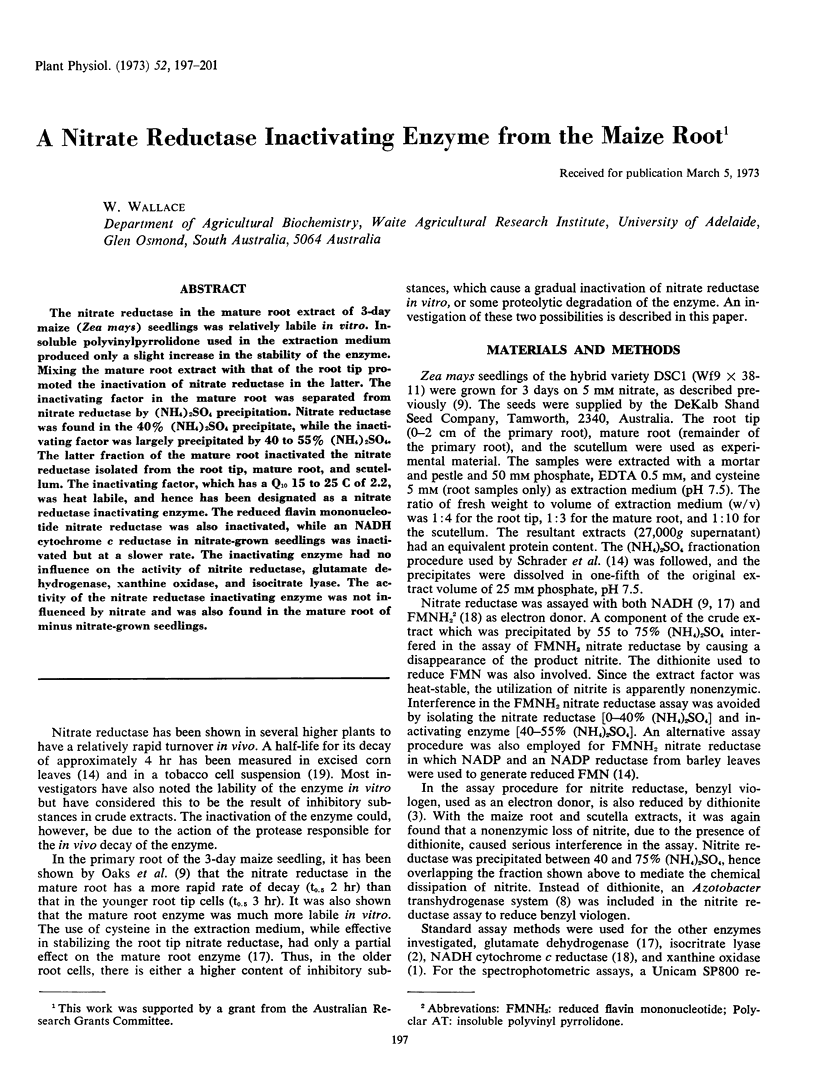
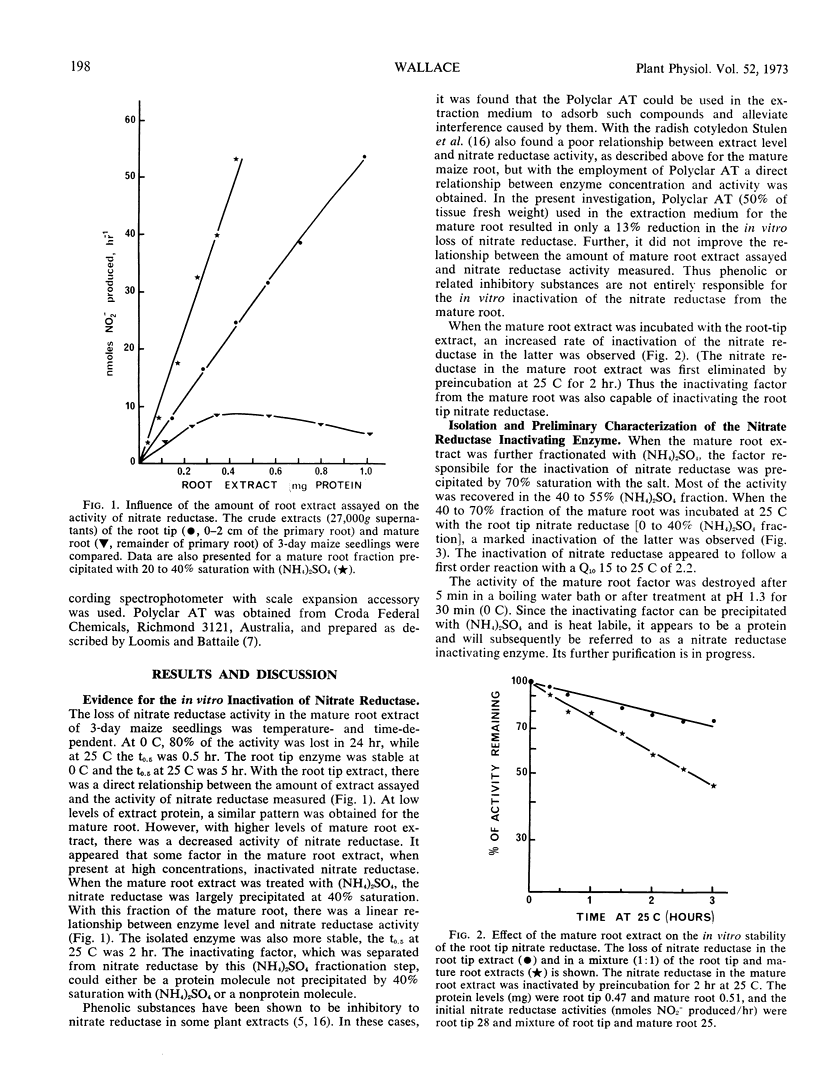
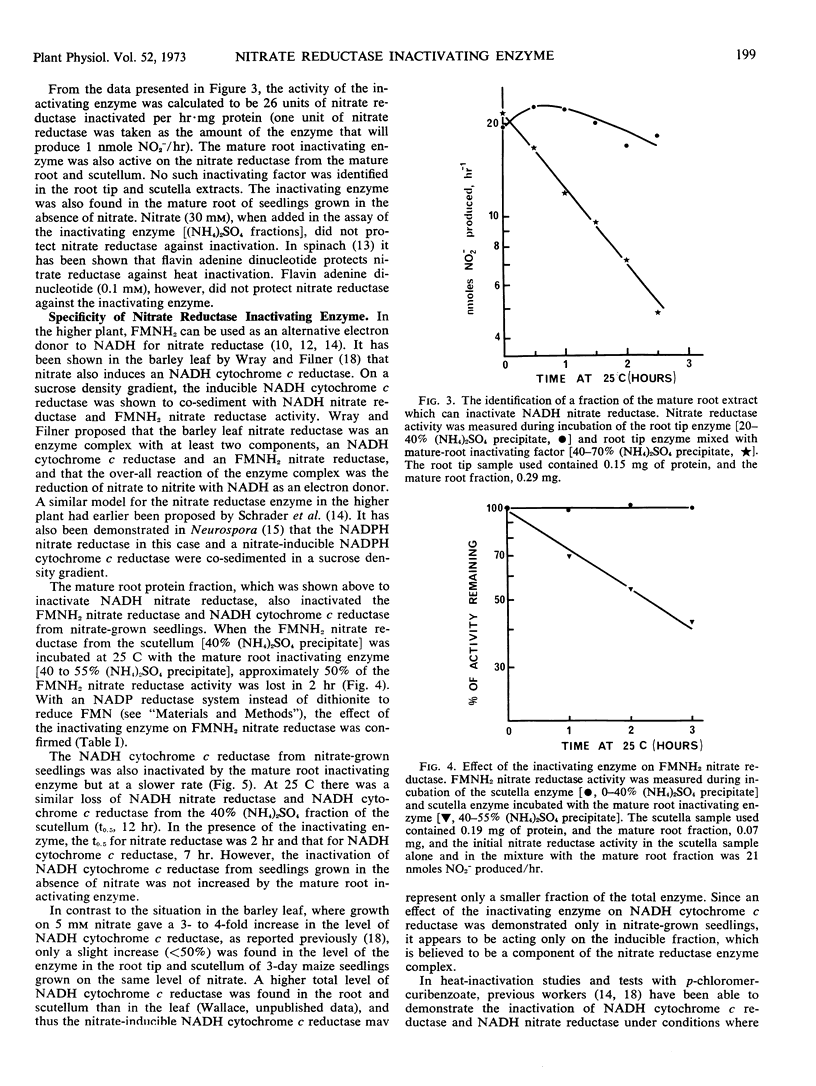
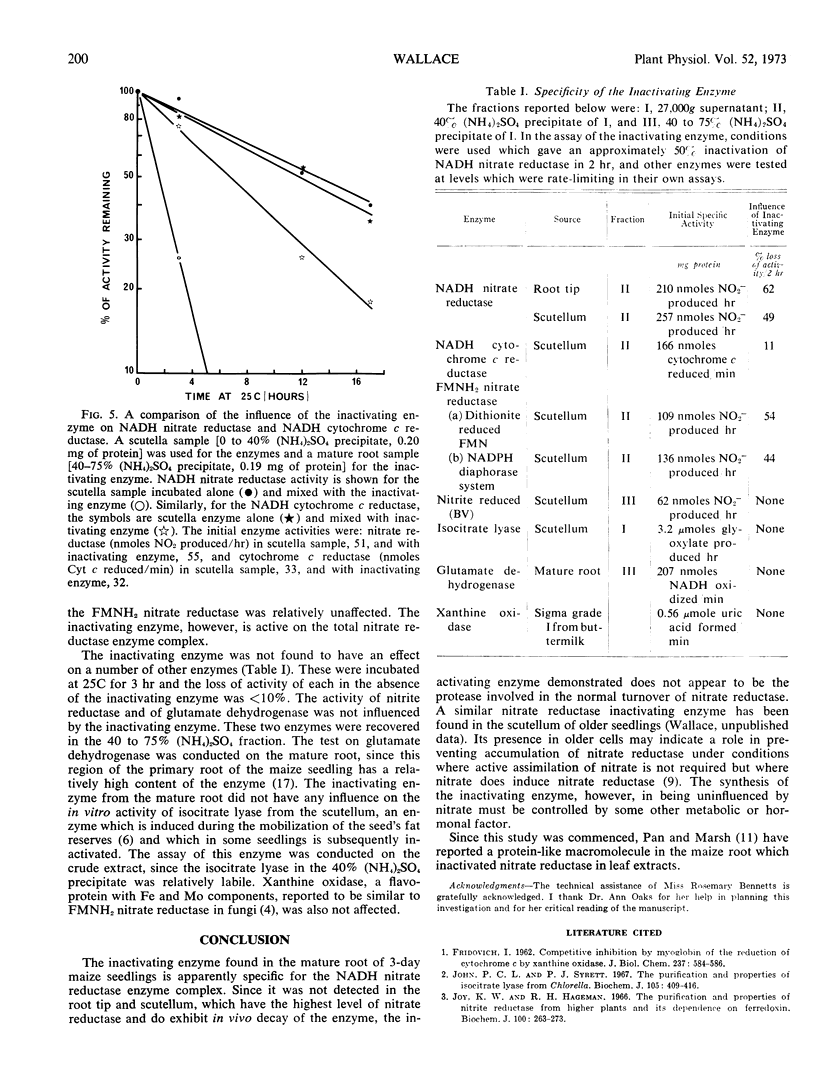
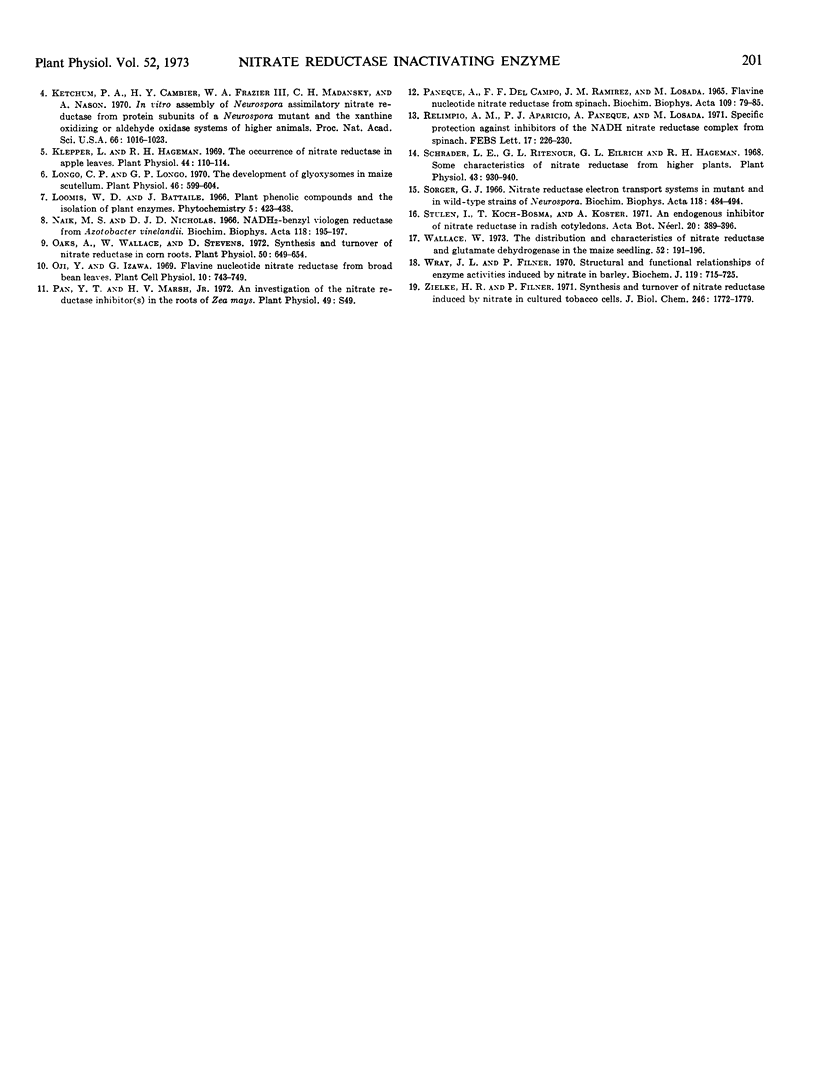
Selected References
These references are in PubMed. This may not be the complete list of references from this article.
- FRIDOVICH I. Competitive inhibition by myoglobin of the reduction of cytochrome c by xanthine oxidase. J Biol Chem. 1962 Feb;237:584–586. [PubMed] [Google Scholar]
- John P. C., Syrett P. J. The purification and properties of isocitrate lyase from Chlorella. Biochem J. 1967 Oct;105(1):409–416. doi: 10.1042/bj1050409. [DOI] [PMC free article] [PubMed] [Google Scholar]
- Joy K. W., Hageman R. H. The purification and properties of nitrite reductase from higher plants, and its dependence on ferredoxin. Biochem J. 1966 Jul;100(1):263–273. doi: 10.1042/bj1000263. [DOI] [PMC free article] [PubMed] [Google Scholar]
- Ketchum P. A., Cambier H. Y., Frazier W. A., 3rd, Madansky C. H., Nason A. In vitro assembly of Neurospora assimilatory nitrate reductase from protein subunits of a Neurospora mutant and the xanthine oxidizing or aldehyde oxidase systems of higher animals. Proc Natl Acad Sci U S A. 1970 Jul;66(3):1016–1023. doi: 10.1073/pnas.66.3.1016. [DOI] [PMC free article] [PubMed] [Google Scholar]
- Klepper L., Hageman R. H. The occurrence of nitrate reductase in apple leaves. Plant Physiol. 1969 Jan;44(1):110–114. doi: 10.1104/pp.44.1.110. [DOI] [PMC free article] [PubMed] [Google Scholar]
- Longo G. P., Longo C. P. The development of glyoxysomes in maize scutellum: changes in morphology and enzyme compartmentation. Plant Physiol. 1970 Oct;46(4):599–604. doi: 10.1104/pp.46.4.599. [DOI] [PMC free article] [PubMed] [Google Scholar]
- Naik M. S., Nicholas D. J. NADH2-benzyl viologen reductase from Azotobacter vinelandii. Biochim Biophys Acta. 1966 Apr 12;118(1):195–197. doi: 10.1016/s0926-6593(66)80157-1. [DOI] [PubMed] [Google Scholar]
- Oaks A., Wallace W., Stevens D. Synthesis and turnover of nitrate reductase in corn roots. Plant Physiol. 1972 Dec;50(6):649–654. doi: 10.1104/pp.50.6.649. [DOI] [PMC free article] [PubMed] [Google Scholar]
- Paneque A., Del Campo F. F., Ramírez J. M., Losada M. Flavin nucleotide nitrate reductase from spinach. Biochim Biophys Acta. 1965 Sep 27;109(1):79–85. doi: 10.1016/0926-6585(65)90092-0. [DOI] [PubMed] [Google Scholar]
- Relimpio A. M., Aparicio P. J., Paneque A., Losada M. Specific protection against inhibitors of the NADH-nitrate reductase complex from spinach. FEBS Lett. 1971 Oct 1;17(2):226–230. doi: 10.1016/0014-5793(71)80152-7. [DOI] [PubMed] [Google Scholar]
- Schrader L. E., Ritenour G. L., Eilrich G. L., Hageman R. H. Some characteristics of nitrate reductase from higher plants. Plant Physiol. 1968 Jun;43(6):930–940. doi: 10.1104/pp.43.6.930. [DOI] [PMC free article] [PubMed] [Google Scholar]
- Sorger G. J. Nitrate reductase electron transport systems in mutant and in wild-type strains of Neurospora. Biochim Biophys Acta. 1966 Jun 15;118(3):484–494. doi: 10.1016/s0926-6593(66)80091-7. [DOI] [PubMed] [Google Scholar]
- Wallace W. The distribution and characteristics of nitrate reductase and glutamate dehydrogenase in the maize seedling. Plant Physiol. 1973 Sep;52(3):191–196. doi: 10.1104/pp.52.3.191. [DOI] [PMC free article] [PubMed] [Google Scholar]
- Wray J. L., Filner P. Structural and functional relationships of enzyme activities induced by nitrate in barley. Biochem J. 1970 Oct;119(4):715–725. doi: 10.1042/bj1190715. [DOI] [PMC free article] [PubMed] [Google Scholar]
- Zielke H. R., Filner P. Synthesis and turnover of nitrate reductase induced by nitrate in cultured tobacco cells. J Biol Chem. 1971 Mar 25;246(6):1772–1779. [PubMed] [Google Scholar]


